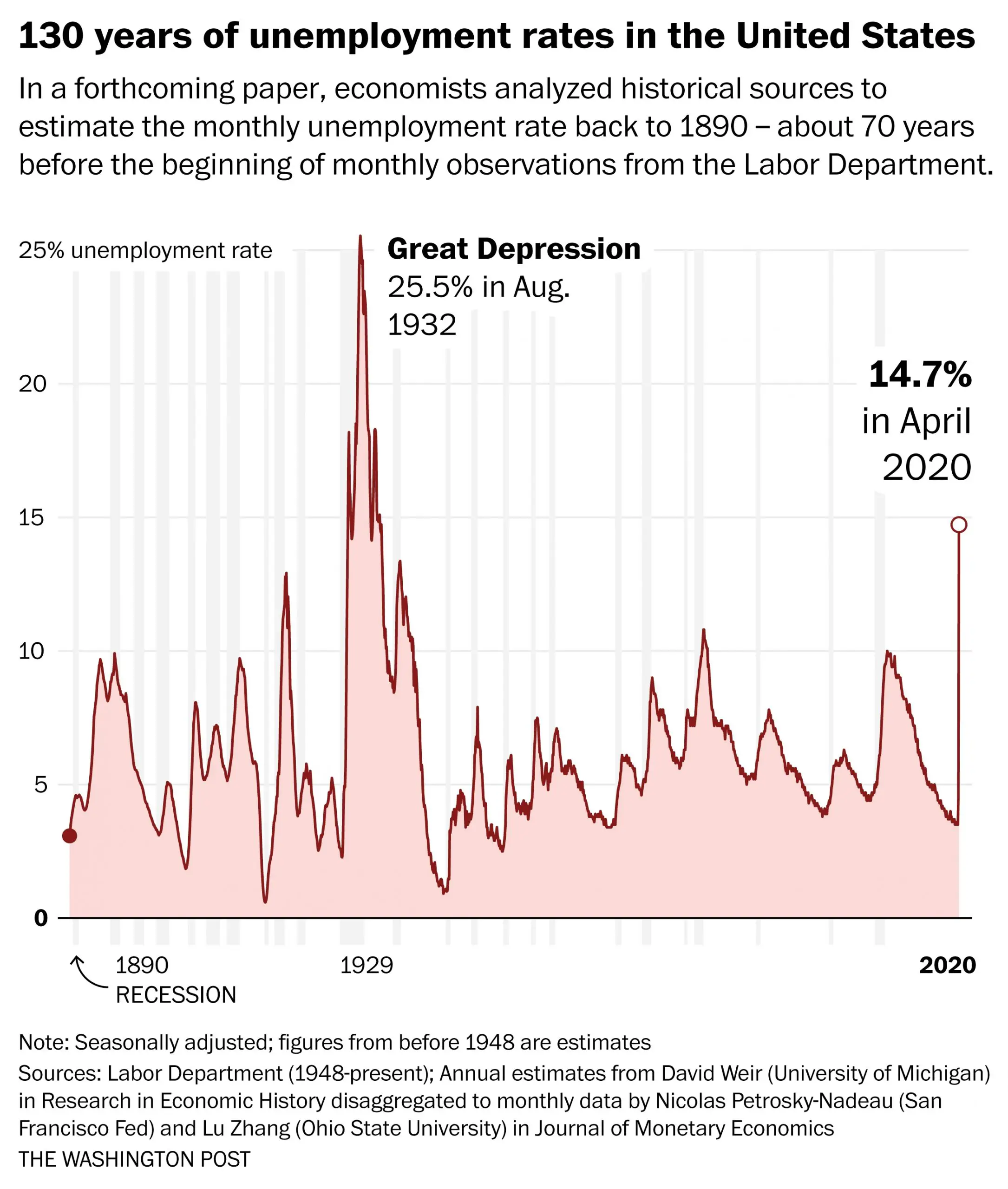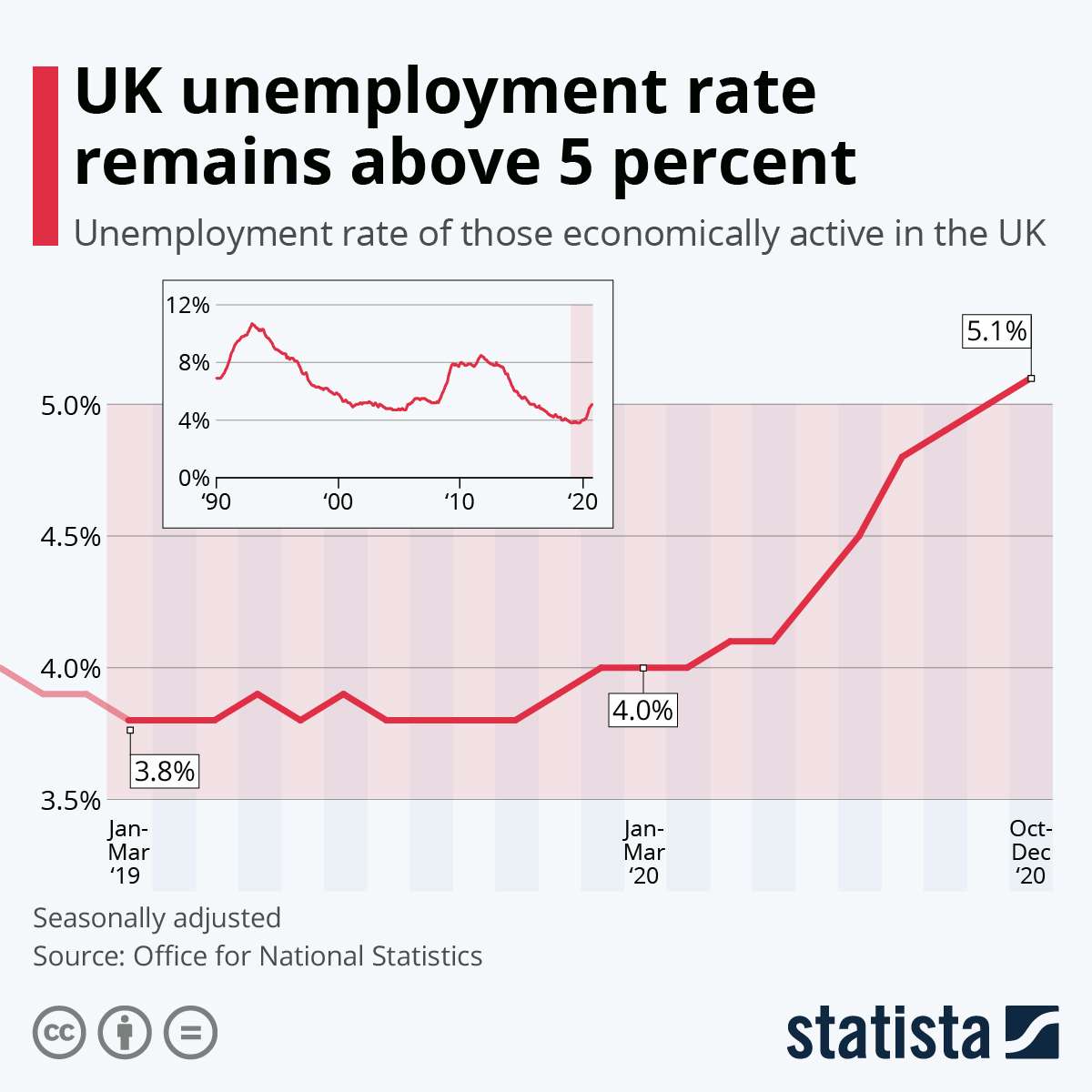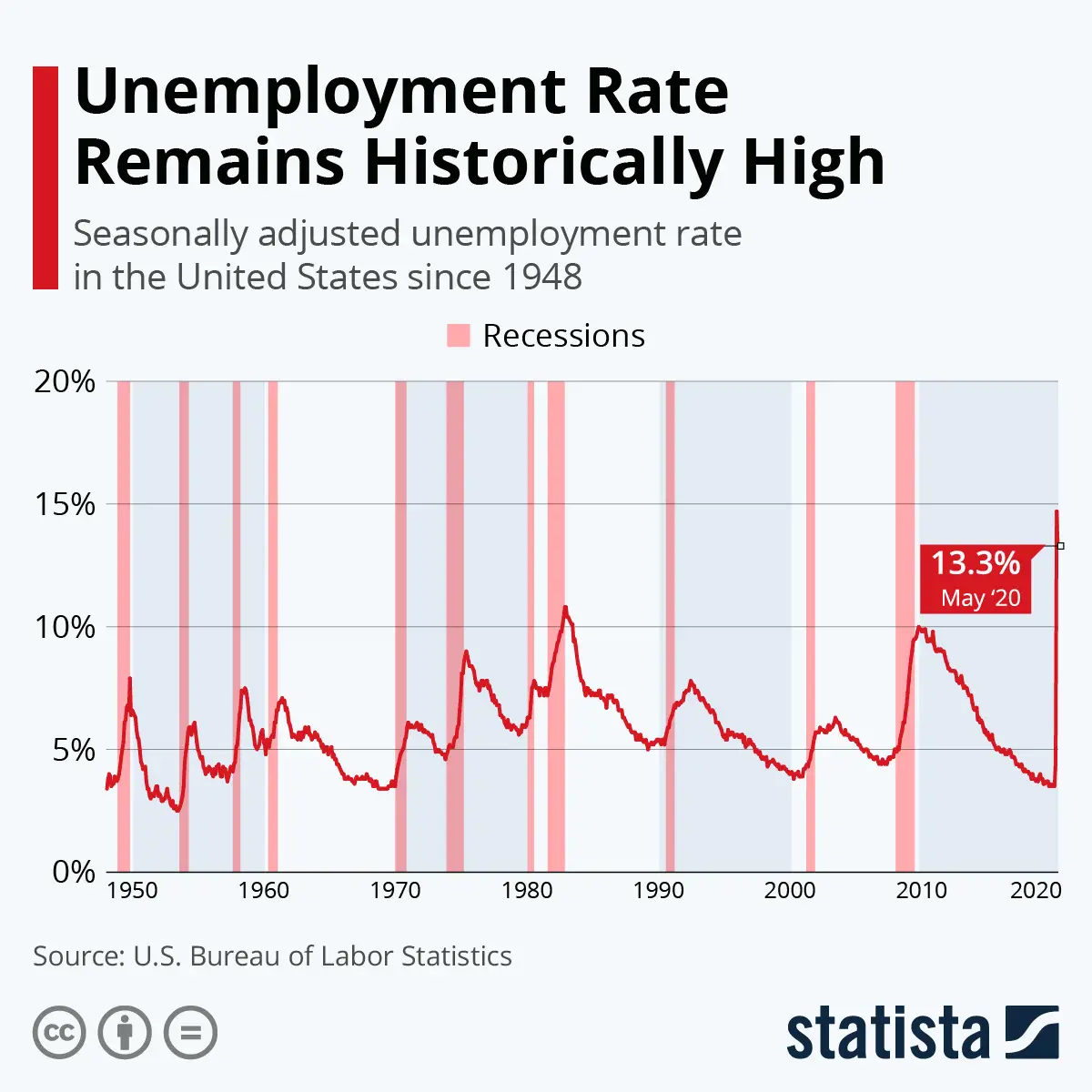Unemployment: Its Measurement And Types
The unemployment rate is the most commonlyused indicator for understanding conditions inthe labour market. The labour market is the termused by economists when talking about thesupply of labour and demandfor labour .The unemployment rate can also provide insightsinto how the economy is performing moregenerally, making it an important factor in thinkingabout monetary policy.
This explainer outlines two key topics related tounemployment.
Calculating The Unemployment Rate
Remember that the unemployed are those who are out of work and who are actively looking for a job. We can calculate the unemployment rate by dividing the number of unemployed people by the total number in the labor force, then multiplying by 100.
Figure 1. Employed, Unemployed, and Out of the Labor Force Distribution of Adult Population , 2016. The total adult, working-age population in 2016 was 253.5 million. Out of this total population, 151.4 million were classified as employed and 7.7 million were classified as unemployed. The remaining 94.4 million were classified as out of the labor force. As you will learn, however, this seemingly simple chart does not tell the whole story.
Figure 1 shows the three-way division of the over-16 adult population. In 2016, 62.8% of the adult population was in the labor force that is, either employed or without a job but looking for work. Those in the labor force can be divided into the employed and the unemployed. These values are also shown in Table 1. The unemployment rate is not the percentage of the total adult population without jobs, but rather the percentage of adults who are in the labor force but who do not have jobs:
\text=\frac}}\times
| Table 1. U.S. Employment and Unemployment, 2016 | |
|---|---|
| Total adult population over the age of 16 | 253.5 million |
| Out of the labor force | 94.4 million |
Us Unemployment Rate History
Kimberly Amadeo is an expert on U.S. and world economies and investing, with over 20 years of experience in economic analysis and business strategy. She is the President of the economic website World Money Watch. As a writer for The Balance, Kimberly provides insight on the state of the present-day economy, as well as past events that have had a lasting impact.
Erika Rasure, is the Founder of Crypto Goddess, the first learning community curated for women to learn how to invest their moneyand themselvesin crypto, blockchain, and the future of finance and digital assets. She is a financial therapist and is globally-recognized as a leading personal finance and cryptocurrency subject matter expert and educator.
The Balance / Julie Bang
The unemployment rate is the percentage of unemployed workers in the labor force. It’s a key indicator of the health of the country’s economy. Unemployment typically rises during recessions and falls during periods of economic prosperity. The rate also declined during several U.S. wars, particularly during World War II. The unemployment rate rose during the recessions that followed those wars.
Here’s how the unemployment rate has changed over time and how it’s compared to gross domestic product and inflation.
Also Check: How Much Do You Get For Unemployment In Texas
Where Do The Statistics Come From
Early each month, the Bureau of Labor Statistics of the U.S. Department of Labor announces the total number of employed and unemployed peoplein the United States for the previous month, along with many characteristics about them. These figures, particularly the unemployment ratewhich tells you the percentage of the labor forcethat is unemployedreceive wide coverage in the media.
Some people think that to get these figures on unemployment, the government uses the number of people collecting unemployment insurance benefits under state or federal governmentprograms. But some people are still jobless when their benefits run out, and many more are not eligible at all or delay or never apply for benefits. So, quite clearly, UI informationcannot be used as a source for complete information on the number of unemployed.
Other people think that the government counts every unemployed person each month. To do this, every home in the country would have to be contactedjust as in the population censusevery 10 years. This procedure would cost way too much and take far too long to produce the data. In addition, people would soon grow tired of having a census taker contact themevery month, year after year, to ask about job-related activities.
What Do The Unemployment Insurance Figures Measure

Unemployment insurance programs are administered at the state level and provide assistance to jobless people who are looking for work. Statistics on the insured unemployedin the United States are collected as a by-product of state UI programs. Workers who lose their jobs may file applications to determine if they are eligible for UI assistance.These applications are referred to as “initial claims.” Claimants who meet the eligibility requirements must file “continuing claims” for each week that they seek benefits.
Data on initial and continuing UI claims are maintained by the Employment and Training Administration, an agency of the U.S. Department of Labor, and are available on theInternet at .
While the UI claims data provide useful information, they are not used to measure total unemployment because they exclude several important groups. To begin with,not all workers are covered by UI programs. For example, self-employed workers, unpaid family workers, workers in certain not-for-profit organizations, and severalother small worker categories are not covered.
In addition, the insured unemployed exclude the following:
Don’t Miss: Can I Receive Ssdi And Unemployment At The Same Time
Us Unemployment Rates By Year
The U.S. Bureau of Labor Statistics has measured unemployment since the stock market crash of 1929.
Gross domestic product is the measure of economic output by a country. When the unemployment rate is high, there are fewer workers. That could lead to less economic output and a lower rate of GDP.
When inflation rises, the prices of goods and services go up, making them more expensive. If there is a high rate of unemployment at the same time, this could cause issues for those without an income since they may be struggling to afford basic necessities.
The following table shows how unemployment, GDP, and inflation have changed by year since 1929. Unless otherwise stated, the unemployment rate is for December of that year. Unemployment rates for the years 1929 through 1947 were calculated from a different BLS source due to current BLS data only going back to 1948. GDP is the annual rate and inflation is for December of that year and is the year-over-year rate.
| Year |
|---|
How To Use The Unemployment Rate
Keep in mind that the unemployment rate is a lagging indicator. It tells you what has already happened, since employers only lay off workers after business slows down.
Companies resist hiring new workers when a recession is over, until they can be sure that the economy will stay strong. The economy could improve for months, and the recession could be over before the unemployment rate drops. It’s not suitable for predicting trends, but it’s useful for confirming them.
Read Also: How To Certify For Unemployment
What Is The Unemployment Rate
The unemployment rate is the percentage of the labor force without a job. It is a lagging indicator, meaning that it generally rises or falls in the wake of changing economic conditions, rather than anticipating them. When the economy is in poor shape and jobs are scarce, the unemployment rate can be expected to rise. When the economy grows at a healthy rate and jobs are relatively plentiful, it can be expected to fall.
Why Does The Government Collect Statistics On The Unemployed
When workers are unemployed, they, their families, and the country as a whole lose. Workers and their families lose wages, and the country loses the goods or services that could have been produced. In addition, the purchasing power of these workers is lost, which can lead to unemployment for yet other workers.
Addressing the issue of unemployment requires information about the extent and nature of the problem. How many people are unemployed? How did they become unemployed? How long have they been unemployed? Are their numbers growing or declining? Are they men or women? Are they young or old? Are they White, or Black, or Asian, or of Hispanic ethnicity? How much education do they have? Are they concentrated in one area of the country more than another? These statisticstogether with other economic datacan be used by policymakers to determine whether measures should be taken to influence the future course of the economy or to aid those affected by joblessness.
You May Like: How To Collect Unemployment In Nc
Whats The Difference Between Natural And Frictional Unemployment
A natural unemployment is the rate at which people are unemployed in a health economy since unemployment will never reach 0%, this usually lies between e-6%. What is frictionally unemployed? Frictionally unemployed means that someone is unemployed due to the time it takes to find a job.
What are the three components of natural unemployment?
Natural unemployment contains three components: structural unemployment, surplus unemployment, and frictional unemployment. The 2008 recession did not offset the long-term trends that are lowering the U.S. natural rate of unemployment.
Flows Into And Out Of Employment
Flows into and out of employment are extensive and are based on the net matched sample of original employment growth between two consecutive months . The sum of the inflows and outflows does not necessarily equal the ‘net’ employment growth.
For September 2022, the net change in the number of employed people is the result of around 488,000 people entering employment , while around 446,000 people left employment . This contrasts with August 2022, where around 469,000 people entered employment and around 450,000 people left employment.
| 66.3% |
Don’t Miss: Nj Unemployment Federal Id Number
How The Natural Rate Of Unemployment Works
Even in a healthy economy, there is some level of unemployment for three main reasons:
Tasci, Murat, and John Lindner. 2010. Has the Beveridge Curve Shifted? FRB Cleveland Economic Trends, August 10.
What Is The Lowest Unemployment Rate In Us History

In September 2019, the U.S. unemployment rate dropped to 3.5%, near the lowest rate in 50 years. On May 8, 2020, the Bureau of Labor Statistics reported that 20.5 million nonfarm jobs were lost and the unemployment rate rose to 14.7 percent in April, due to the Coronavirus pandemic in the United States.
Don’t Miss: How To Make Money Fast While Unemployed
Whats The Difference Between Being Unemployed And Being Out Of The Labor Force
People who are not working and who dont meet the criteria to be counted as unemployed are said to be out of the labor force. This category includes students, retirees, and those who stay at home to take care of family members. In addition, people who report wanting a job but who have not looked for work in the most recent four weeks are also considered out of the labor force. Between February 2020 and January 2021, 5.5 million people dropped out of the labor force, on net. At the same time, the number of people out of the labor force who said they wanted a job rose by 1.9 million.
What Are The Other Measures Of Us Unemployment
American unemployment rates utilize five measures in addition to the headline H3 figures: U-1, U-2, U-4, U-5, and U-6. Each of these incrementally considers additional groups of individuals and labels them as unemployed The U-6 number is sometimes referred to as the “real” unemployment rate since it is the most comprehensive.
Also Check: Do Holidays Affect Unemployment Payments 2021
About State Unemployment Tax
When you have employees, you must pay federal and state unemployment taxes. These taxes fund unemployment programs and pay out benefits to employees who lose their jobs through no fault of their own.
Generally, unemployment taxes are employer-only taxes, meaning you do not withhold the tax from employee wages. However, some states require that you withhold additional money from employee wages for state unemployment taxes .
State unemployment tax is a percentage of an employees wages. Each state sets a different range of tax rates. Your tax rate might be based on factors like your industry, how many former employees received unemployment benefits, and experience.
State unemployment taxes are referred to as SUTA tax or state unemployment insurance . Or, they may be referred to as reemployment taxes .
You pay SUTA tax to the state where the work is taking place. If your employees all work in the state your business is located in, you will pay SUTA tax to the state your business is located in. But if your employees work in different states, you will pay SUTA tax to each state an employee works in.
States also set wage bases for unemployment tax. This means you only contribute unemployment tax until the employee earns above a certain amount.
What Is The Formula Of Unemployment Rate
The formula for unemployment rate is: Unemployment Rate = Number of Unemployed Persons / Labor Force. The labor force is the sum of unemployed and employed persons. By dividing the number of individuals whom are unemployed by labor force, youll find the labor force participation, or unemployment rate.
Read Also: How To Unlock My Unemployment Account
How To Calculate Unemployment Rate
Dave Lee is a passionate writer and editor with 15+ years of experience in the industry, writing for print and online media in the United States and United Kingdom . He has worked as a freelance writer and editor gaining experience writing in different styles for target audiences on finance, technology, sports, social media, start-ups, security, piracy, and government policy.
The unemployment rate measures the share of employees in the labor force who don’t have a job but actively are seeking work. It’s a key indicator of the performance of a country’s labor market. Understanding the unemployment rate in certain areas of the country can give you a better idea of job opportunities available in that area because a higher unemployment rate might mean there are fewer available positions.
In this article, we discuss what the unemployment rate is, explain why it matters and show you how to calculate it.
It Determines The Impact Of An Economic Event
The unemployment rate is an indicator of how an economic event affected employment during a certain period. For example, a recession is an economic event, and high unemployment rates are the lagging indicator of the effects of the recession. This also indicates that unemployment may steadily rise for a period after the recession ends.
Read Also: What Can Disqualify You From Unemployment Benefits In Texas
Industrial Revolution To Late 19th Century
A description of the miserable living standards of the mill workers in England in 1844 was given by Fredrick Engels in The Condition of the Working Class in England in 1844. In the preface to the 1892 edition, Engels noted that the extreme poverty he had written about in 1844 had largely disappeared. David Ames Wells also noted that living conditions in England had improved near the end of the 19th century and that unemployment was low.
The scarcity and the high price of labor in the US in the 19th century was well documented by contemporary accounts, as in the following:
“The laboring classes are comparatively few in number, but this is counterbalanced by, and indeed, may be one of the causes of the eagerness by which they call in the use of machinery in almost every department of industry. Wherever it can be applied as a substitute for manual labor, it is universally and willingly resorted to…. It is this condition of the labor market, and this eager resort to machinery wherever it can be applied, to which, under the guidance of superior education and intelligence, the remarkable prosperity of the United States is due.”Joseph Whitworth, 1854
Scarcity of labor was a factor in the economics of slavery in the United States.
It Helps The Government Create Policies

The unemployment rate helps the Federal Reserve in determining monetary policies. It also helps the government make policy decisions that aim to create employment because it depicts the underutilization of labor, which leads to lower production of services and goods. In addition, investors use the unemployment rate to determine which sectors of the economy have decreasing job growth to decide the best way to invest their money.
Related: How Does Unemployment Work? 9 Things To Know
Recommended Reading: Does Unemployment Affect Getting Mortgage